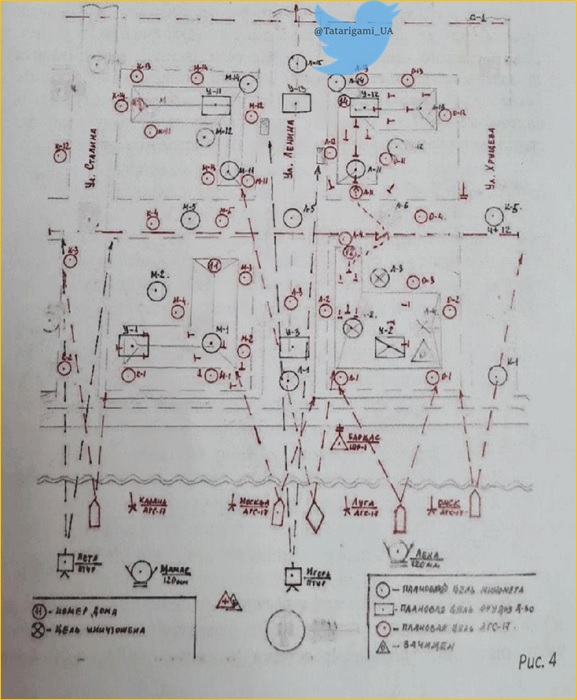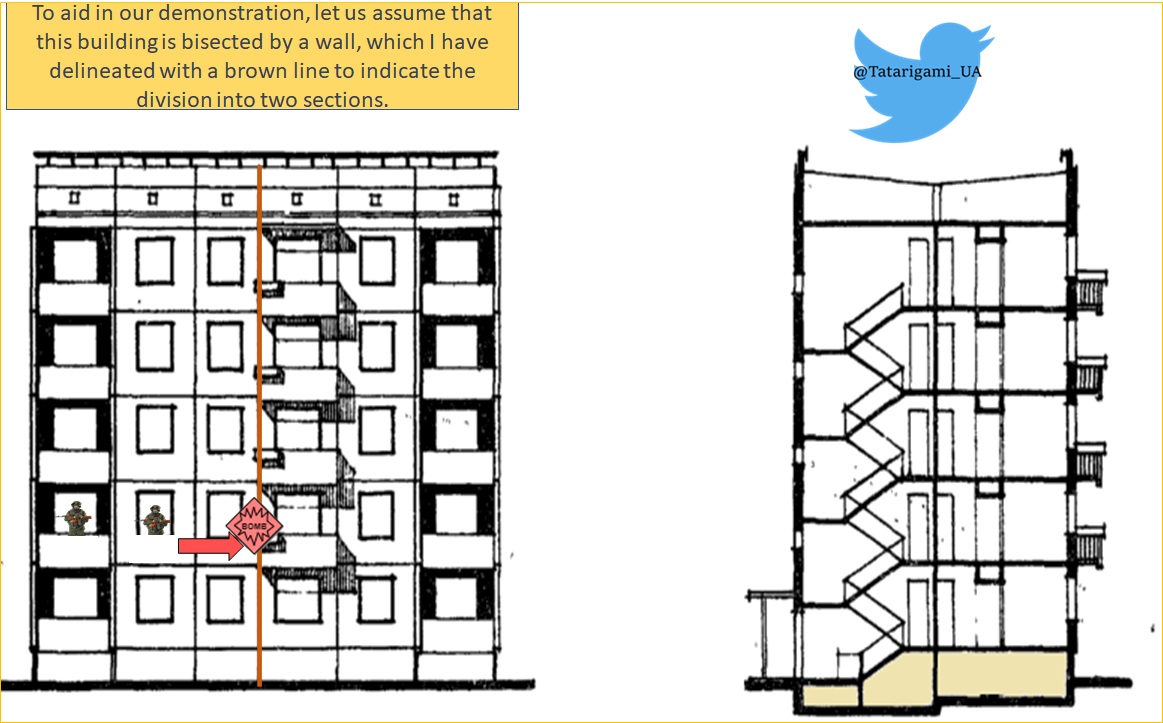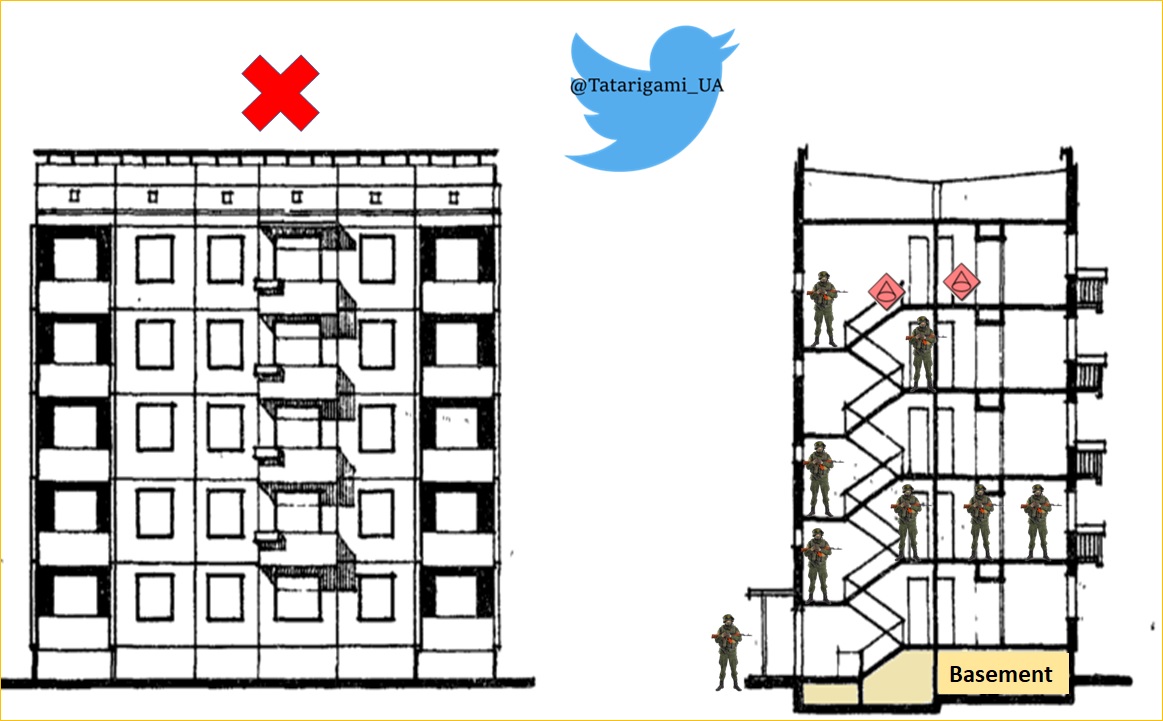🧵 1/ This is part two of the "Assault Units" thread, which focuses on suggestions for russian assault units in urban combat, gleaned from captured documents. The section provides general recommendations on tactics that assault units can employ in urban warfare scenarios. 

2/
Main provisions from the document regarding urban warfare:
- To ensure safe passage, holes should be made by tanks or explosives in fences and buildings.
- The route of movement of assault companies, if possible, should exclude movement along roads and straight streets
Main provisions from the document regarding urban warfare:
- To ensure safe passage, holes should be made by tanks or explosives in fences and buildings.
- The route of movement of assault companies, if possible, should exclude movement along roads and straight streets

4/
- As a military tactics, it is recommended to assign new names to streets and buildings in towns that are being assaulted. This is done to confuse defenders and exploit open coms channels. In the present case, the attackers named the streets Lenin, Stalin, and Khrushchev
- As a military tactics, it is recommended to assign new names to streets and buildings in towns that are being assaulted. This is done to confuse defenders and exploit open coms channels. In the present case, the attackers named the streets Lenin, Stalin, and Khrushchev

5/
- The assault begins with artillery fire on the front line of defense. The transfer of artillery fire to the next line is carried out by the commander
- The assault begins with artillery fire on the front line of defense. The transfer of artillery fire to the next line is carried out by the commander

6/
- If the multi-store building is well fortified and can't be easily assaulted, then the "Squeezing" method should be used: instead of blocking the building, the assaulters should take cover in nearby buildings.
- If the multi-store building is well fortified and can't be easily assaulted, then the "Squeezing" method should be used: instead of blocking the building, the assaulters should take cover in nearby buildings.

7/
- Meanwhile, artillery (or AGS) and firesupport teams should proceed with engaging the target. This way the enemy gets a chance to leave the building while taking losses from artillery, providing an opportunity for the assault team to advance
- Meanwhile, artillery (or AGS) and firesupport teams should proceed with engaging the target. This way the enemy gets a chance to leave the building while taking losses from artillery, providing an opportunity for the assault team to advance

8/
When an assault platoon tries to clear the multi-store or multi-entrance building, it is recommended to act in the following order:
-One person is set at the entrance, with the task of preventing an enemy attack from the basement or the street.
When an assault platoon tries to clear the multi-store or multi-entrance building, it is recommended to act in the following order:
-One person is set at the entrance, with the task of preventing an enemy attack from the basement or the street.

9/
- The platoon begins to move along the staircase in small groups (3 people) to the upper floors, while soldiers cover each other.
- Clearing is carried out on an apartment basis on each floor, based on the number of rooms in the apartment (one-room, two-room, etc.).
- The platoon begins to move along the staircase in small groups (3 people) to the upper floors, while soldiers cover each other.
- Clearing is carried out on an apartment basis on each floor, based on the number of rooms in the apartment (one-room, two-room, etc.).

10/
- Three people are enough for a one-room apartment.
- When clearing common corridor on a floor, a cover group (1-2 people) is set with the task of preventing an enemy attack from an uncleaned apartment or stairs from the upper floors.
- Three people are enough for a one-room apartment.
- When clearing common corridor on a floor, a cover group (1-2 people) is set with the task of preventing an enemy attack from an uncleaned apartment or stairs from the upper floors.

11/
- The common corridors on the upper floors are mined to exclude the penetration of the enemy into the rear. The clearing of the rest of the building happens in the same method
- The common corridors on the upper floors are mined to exclude the penetration of the enemy into the rear. The clearing of the rest of the building happens in the same method

12/
- After securing all floors, the wall of the apartment on the second floor is broken with TNT or C-4 to get access to the rest of the building.
- After securing all floors, the wall of the apartment on the second floor is broken with TNT or C-4 to get access to the rest of the building.

13/
As the war progresses, russians aim to modernize and become more flexible by implementing changes. However, most instructions are still top-down and blindly applied across the battlefield based on a few successful examples, resembling a cargo cult.
As the war progresses, russians aim to modernize and become more flexible by implementing changes. However, most instructions are still top-down and blindly applied across the battlefield based on a few successful examples, resembling a cargo cult.
14/
Becoming proficient in urban warfare tactics requires extensive training and proper logistics, including training grounds, qualified instructors, and adequate communication equipment. Even with intensive training, it still takes time for a team to become effective
Becoming proficient in urban warfare tactics requires extensive training and proper logistics, including training grounds, qualified instructors, and adequate communication equipment. Even with intensive training, it still takes time for a team to become effective
15/
Does Russia have the necessary capabilities, including sufficient trained officers and NCOs with coms, leadership, teamwork skills to conduct such operations? In my third section, I'll address these questions and examine disparities between manuals and observed practices
Does Russia have the necessary capabilities, including sufficient trained officers and NCOs with coms, leadership, teamwork skills to conduct such operations? In my third section, I'll address these questions and examine disparities between manuals and observed practices
16/
I invite you to follow me to stay updated, as social media algorithms may not prioritize war-related content.
I invite you to follow me to stay updated, as social media algorithms may not prioritize war-related content.
Here's the link to access the scanned version of the original Russian manual, published by Ukrainian journalist Yuri Butusov, in case you wish to review it:
censor.net/en/news/338641…
censor.net/en/news/338641…
• • •
Missing some Tweet in this thread? You can try to
force a refresh















